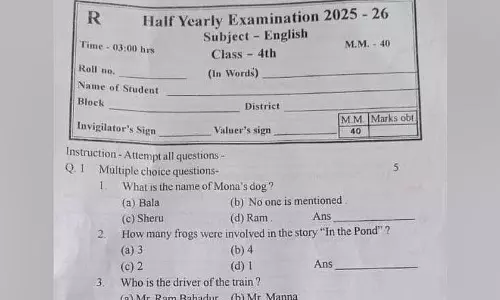
Pragyan Rover overcomes lunar crater, sets path for lunar exploration in Chandrayaan-3 mission
text_fieldsBengaluru: In a ground-breaking advancement for India's space exploration endeavours, the Pragyan rover, an integral component of the Chandrayaan-3 mission, has achieved a significant feat by surmounting its inaugural lunar obstacle.
Having successfully landed on the Moon's southern polar region on August 23, the rover accomplished the remarkable task of traversing a lunar crater with a depth of approximately 100 mm.
This triumph has bolstered the confidence of the Indian Space Research Organisation (ISRO) control room, which remains steadfastly engaged in guiding and monitoring the rover through an array of challenges.
Unlike fully autonomous rovers, Pragyan's movements are orchestrated from ISRO's command centre in Bengaluru, meticulously planned and executed step by step. Every manoeuvre involves intricate planning, with each route requiring the acquisition of data from the on-board navigation cameras.
This data is then used to generate a digital elevation model (DEM) on the ground, aiding the team in determining the safest course of action. The instructions are subsequently uplinked to the rover for execution.
Nevertheless, certain limitations govern the rover's operations. The DEM generated is restricted to a five-meter span whenever the navigation cameras transmit images, which in turn confines each movement command to a maximum coverage of five meters. Chandrayaan-3's project director, P Veeramuthuvel, acknowledged the presence of obstacles even within this constrained range, underscoring the intricacy of the mission.
Furthermore, the rover faces obstacles of its own, including sporadic telemetry and telecommunications availability, as well as the necessity for continuous solar tracking. This results in a turnaround time of approximately five hours between consecutive movement operations. Despite these challenges, Veeramuthuvel expressed unwavering optimism regarding the rover's progression and its potential for yielding noteworthy results.
Armed with a diverse array of scientific instruments, the Pragyan rover is assigned the task of studying the Moon's geological composition and atmospheric conditions. Since its deployment from the lander, the rover has impressively journeyed a distance of roughly eight meters.






















